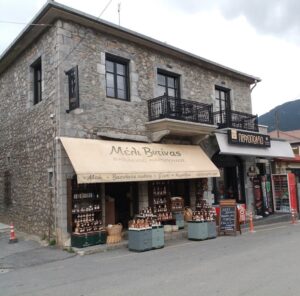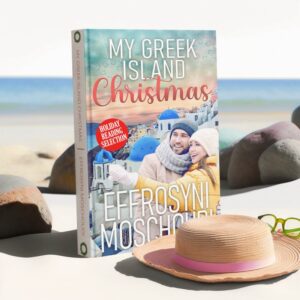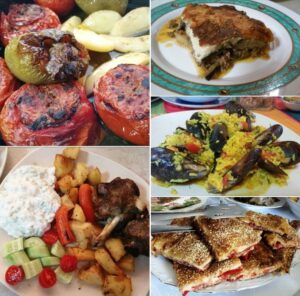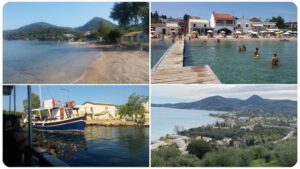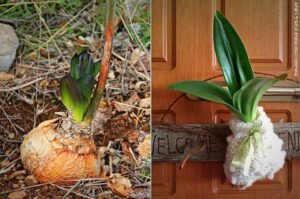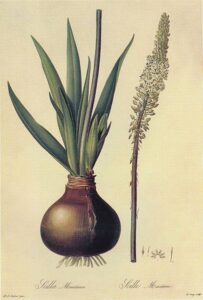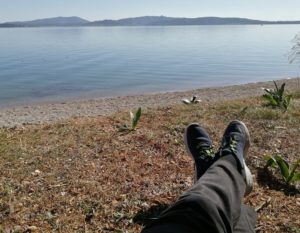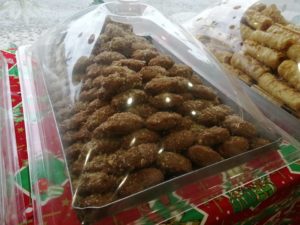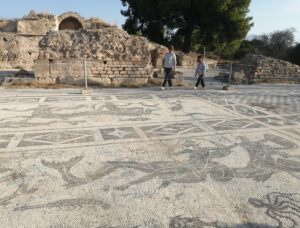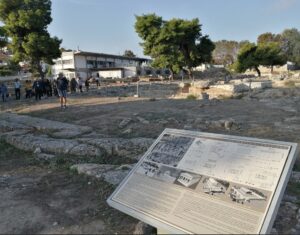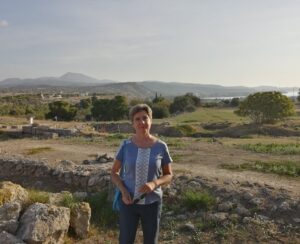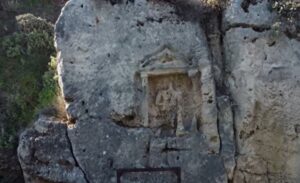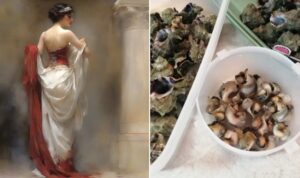A visit to Kastria Cave (aka Cave Lakes)
Today, I am pleased to share photographs from the majestic Kastria Cave (aka Cave Lakes) in the area of Kalavryta.
The cave system is vast and only a small part of it is open to visitors.
We had an enthralling tour for about 30 minutes, exploring the small part of the cave that is open to the public. The main reason why the rest of it will remain out of reach is to ensure its preservation, as well as the survival of its fauna that thrives there for thousands of years.
There are ten bat species in the lakes, something I wasn’t exactly pleased to be told before entering🫣Immediately, my mind conjured up an image of Jim Carrey’s Pet Detective bolting out of a cave that was full of bats and guano and screaming!
Ha ha. Luckily, I didn’t have to do that. The tour guide said we might find droppings on the ground, and said not to photograph any bats if we happen to see them. Again, I was spared from any encounter of the sort 🙃
But, actually, the guano is useful in the caves, as it becomes food for other species, including three endemic ones: a scorpion, a beetle and a spider. These, along with an endemic cricket, have survived safely inside the caves for millenia.
More than 18,000 bats live in the caves. When I found that out I felt even luckier I never saw a single one LOL!
This was not my first visit to a cave. I have been to the impressive Lake Melissani in Kefalonia and the beautiful Diros Caves in the Peloponnese (both explored by boat).
But, entering the Kastria Cave, I was stunned. Nothing could have prepared me for the staggering size of the chambers. I’d never seen a cave before clothed in every way with such sheer magnificence.
I kept looking up and marvelling at the tall ceilings and the beautiful formations from that very first chamber we entered.
The walking tour lasted for about thirty minutes. Walking on artificial bridges over the serene lake waters and going up and down steps, we explored a series of majestic chambers of incredibly high ceilings.
Some of the formations were really impressive, such as a series of natural ‘bathtubs’ that reminded me of those stone bathtubs one can find in luxury hotels in Aegean islands, like Santorini, which imitate natural cavernous spaces. Or, the much larger natural Kolibithres in Mikro Papigo, Zagori, that are out in the open and people can actually swim in them.
But the natural ‘bathtubs’ of the Kastria Cave are out of reach to the public, of course, and can only be viewed from a bridge at close distance. The guide on site told us all of them stay full of water in the winter. They had little to no water during our visit mid-April.
There are 13 lakes inside the cave. The total length is 1.980 meters, but only 500 meters are open to the public. The cave system is laid out on three different levels. Visitors walk along a short, sloped tunnel to enter the cave which takes them straight to the second level.
There are heavy security doors either side of the tunnel to ensure they stay shut in order to preserve the low temperature in the cave. You feel the sudden drop in temperature as soon as you enter.
The exploration of the Kastria Cave took place between 1964-1965. In 1981, it was handed over to the Greek Tourism Authority, and it has been open to the public since 1988.
Across from the entrance to the cave, in a beautiful court with greenery and trees, stands a small, yet interesting, museum. Various findings from excavations in the caves are housed there, including tools, and remains of animals (even those of a hippo!) from the Bronze and Neolithic eras.
All in all, it was a memorable and exciting visit, and if you’re in the area of Kalavryta, I highly recommend you check out this wonderful site.
The nearby village of Planitero is the perfect place for lunch if you’re visiting the area. Planitero is a stunning little village with trout farms and rushing river waters inside a plane tree forest. I did go there for lunch on the same day and you can see photos and read all about it in this post.
Here, I’d like to thank Perivassis Tourism & Τravel Services and our amazing tour guide, Katerina Liontaki, for another wonderful day spent under her wing, and also for her sending me some of her own photographs to post.
GO HERE to see all the pictures from Kastria Cave. Some of them are posters mounted inside the tunnel and depict speleologists. These photos show the cave and the lakes in all their splendour!
Vytina, a beautiful town with many treasures…
On the same day my husband and I visited Kastria Cave on the coach tour, we stopped at Vytina for coffee.
Vytina is a traditional settlement in the Peloponnese that has beautiful stone buildings. It is built at the foot of the mountain range, Mainalo.
Go here to see my pictures from Vytina.
We had coffee at the square in one of the many cafes beside a beautiful stone-built church. Then, we looked around the shops that sell traditional products, including the local honey variety that has a striking yellowish color.
It is called Elati Vanilia, and it is a treasure to the immune system, and also beneficial for a number of health issues.
We also found out that the region also produces a variety of marble that is named The Black of Vytina. Truly, it’s a blessed little place, with many treasures.
But that wasn’t all we discovered there. Thanks to our wonderful guide, who tipped us off, we then took a downward street from the square, looking for love…
And love, we did find, just a couple minutes later, getting into the most serene little road lined by trees that has a very special name 😍
This is a photo of me on ‘The Road of Love’ (O Dromos tis Agapis) in Vytina. It has been named thus by the locals because, for many generations, it has been the meeting place for young lovers to take a walk in the quiet.
The road stretches out into the distance, as far as you can see, with beautiful tall trees either side. There are hardly any houses around, just grassy fields and more trees.
Back in April when I visited, the distant snow-capped mountains were the perfect backdrop. The birdsong was ample and sweet in my ears. The grassy ground was strewn with tiny white flowers, including chamomile.
It all combined to create a sweet springtime memory that I will treasure forever.
I am at an age when I need nothing in terms of physical things. Most of the time, I don’t wish for a present anymore on the big days but always go for a meal out, or a day out in nature to celebrate, instead.
Beautiful memories is the only thing I seek when I think of exciting new ‘acquisitions.’
It is a privilege and an honor to share my experiences with you. Once again, I’d like to thank everyone who writes to tell me how they enjoy reading about my travels. You give me encouragement to keep on traveling and sharing!
Before I go, to share my big news. I just finished writing My Greek Island Christmas! What I can tell you is it got me and hubby (who is my forever eager editor) in the same places!
This means that if we laughed or cried in certain scenes, chances are you will too 😃 But it has a nice balance of humor, romance and family drama. Oh. And lots of Greek food. That blessed girl cooked every day in that farm in Santorini, and she kept me salivating 😛
Anyway, I am really pleased it’s done! Another baby of mine born, and the feeling is amazing every time 💗
GO HERE to check out the book and download a FREE sample! The book is available on preorder in various stores 🥳
Till next time, enjoy summer and keep reading amazing books!
Interested in discovering more places in the Peloponnese? Check out these posts next!
A cruise through the Corinth Canal and fun facts https://effrosyniwrites.com/2024/10/25/corinth-canal-cruise-and-corfiot-pastitsada/
A stunning fresco at the Isthmia Roman Baths, Nero, and a mollusc with a royal secret https://effrosyniwrites.com/2024/11/08/fresco-isthmia-roman-baths-nero-corinth-canal/
Majestic views in Lake Doxa and an old secret school… https://effrosyniwrites.com/2022/12/09/majestic-views-secret-school/
Sharing is caring! Here’s a ready tweet for you to spread some love:
Interested in travel, food and books from Greece? Here's a blog you will love! #Greek #travel #romancebooks Share on X
3 FREE books for you! Sign up below to receive them instantly!
New! Clean Christmas romance. Two broken hearts. One magical holiday. A Santorini farm where anything can happen.
Check it out on Amazon Read a FREE sample!



